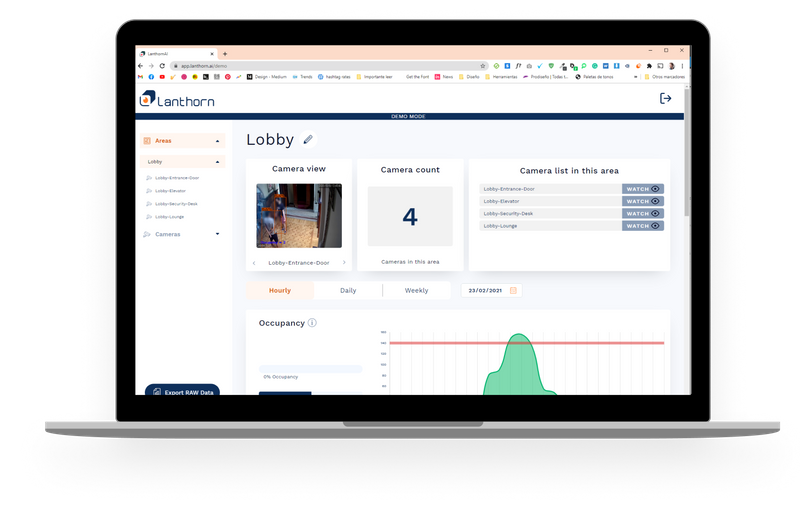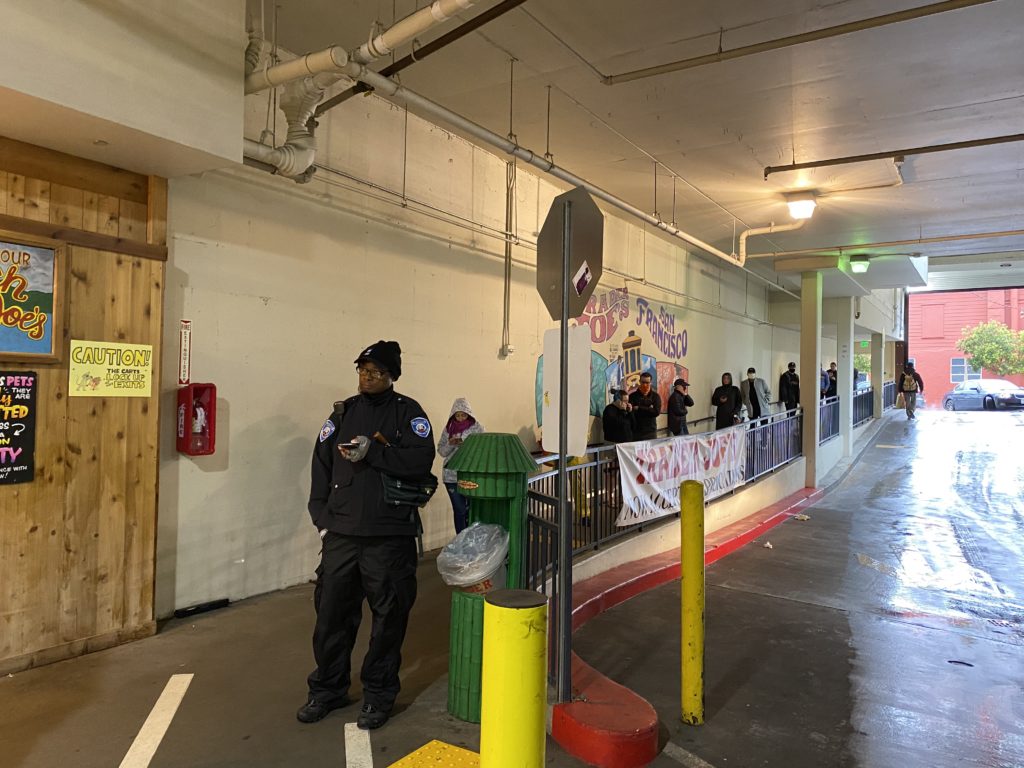Smart Distancing with the Power of AI

This is the beginning of Galliot’s effort to contribute to controlling the Covid-19 pandemic by building an automatic surveillance system for Distancing Detection.
This is the beginning of Galliot’s work on the Social Distancing Detection product.
You can skip to the technical documentation of this work and read about its new codebase architecture.
Head out to our GitHub and roadmap.
Check out our guide to data labeling methodology for building your datasets.
1. Intro
To Shop or Not to Shop
Call it whatever you like; as the United Nations chief puts it, it is “the worst global crisis since World War II.” Coronavirus Disease 2019, or COVID-19, has caused chaos and fear all over the world. All non-essential businesses and services have been shut down in 42 states due to the COVID-19 pandemic, and many businesses are struggling to survive. This pandemic will reshape how we live our lives for many years to come.
Essential businesses such as grocery stores and pharmacies remain open, but they are hotspots for COVID-19. The workers are at a high risk of contracting the virus, and so are the shoppers. White House’s response coordinator Deborah Birx said in a statement that “This is the moment not to be going to the grocery store, not going to the pharmacy, but doing everything you can to keep your family and your friends safe.” People are afraid to go out shopping for their essential needs, but with few alternatives, many have no choice but to make the trip. So how do we protect shoppers and workers at the store?


6 Feet of Separation…
So we are experiencing a deadly pandemic, but we still need access to essential goods and services. We also know that, according to the Center for Disease Control (CDC), to stay safe during this pandemic, we need to practice social distancing rules and keep a minimum distance of 6 feet from people outside of our households. Essential businesses are allowed to be open so long that they follow social distancing rules. There is a problem; however, stores have limited space, and people might break social distancing rules without even realizing it. So how do we work with the limited options we have to make shopping for essential goods safe?
In response to social distancing rules, stores were asked to limit the number of people who can be inside at the same time. Shoppers are forced to keep their distance while waiting in line to get in or during checkout. Some stores are marking where people should be standing, spacing everybody apart, and some supermarkets are testing one-way aisles.
Besides the entrance and checkout lines, there is nowhere else in the store where these safety measures are enforced. The best we can hope for is that shoppers will honor the social distancing rules while they shop. So far, creating long lines and increasing wait time for getting groceries has been our best hope in minimizing the spread of COVID-19, but there are drawbacks to this approach.
Longer wait times mean more time spent outside the house, and more time spent in public means a higher risk of exposure to COVID-19. Longer wait times have also led to overbuying, which stresses the supply chain, results in waste, and causes shortages for others. Many stores have brought in more staff to help manage the social distancing etiquette. This is not only resource-intensive but puts the health of personnel at risk. More importantly, what is the guarantee that all shoppers will maintain a safe distance at all times? Social distancing might work in theory but might not be practical without the appropriate measures and tools. Aisles are sometimes too narrow, high-demand items might be placed next to each other, and shoppers might simply forget or misjudge the safe distance, what if two customers want a product from the same shelf? It will quickly become apparent that social distancing at stores is not as simple as limiting the store’s total capacity. Ad hoc solutions to social distancing in the absence of relevant data could lead to unexpected outcomes, such as high-traffic areas and a higher risk of exposure.
2. What is Smart Distancing?
Social distancing is crucial in our fight against COVID-19; it may remain an essential part of our lives for months and reshape how we interact with the outside world forever. The current way of social distancing at stores is not a viable long-term solution, and we need to come up with a better way to restore the shopping experience while ensuring the safety of everyone.
We can be smarter in socially distancing ourselves at all times and make shopping more efficient and safer during COVID-19 and beyond. With the help of Artificial Intelligence (AI), the same technology that is the backbone of self-driving Teslas and Netflix recommendations, combined with edge computing, the technology that is reshaping the Internet of Things (IoT), we can practice social distancing with minimal disruption to our daily lives. Imagine a seamless integration of social distancing to our shopping experience powered by big data and AI. Using available data stores can better implement social distancing. For example, stores can change aisle traffic in real-time, identify hotspots and re-distribute products to eliminate them, and vary the number of cashiers to reduce long wait times while eliminating the risk of exposure to shoppers and workers.
3. Distancing Smartly with Galliot
Our open-source platform for deep learning models on edge devices has come up with an innovative solution to help us distance ourselves smartly during these unprecedented times. It can measure social distancing rates in stores, shopping centers, workplaces, and elsewhere.
Introducing an open-source application that uses existing infrastructure, such as security cameras, to measure social distancing rates automatically. It will then alert business owners if social distancing rules are being broken at their workplace.
This project works with existing hardware infrastructure and connects to your store camera, and uses an edge device such as Jetson Nano or Google Coral Dev Board to monitor social distancing. It also generates and processes data to make useful suggestions. For example, this model can identify high-traffic areas and specify high-demand items that need to be re-distributed. It can also analyze shopper activities and output statistics for the degree of store crowdedness at different hours of the day. These data analytics and suggestions can help managers make better decisions.
4. Smart Distancing on the Edge of AI
In summary, social distancing is our new normal, and we need to be respectful of it for the health and safety of ourselves and others. We can, however, be smart about how we distance ourselves in public places. smart distancing will help us be safe and efficient every time we shop by doing the following:
– It allows us to free up personnel and resources needed for the manual implementation of social distancing
– Using data and AI, this solution will intelligently standardize social distancing. Without a human in the loop, this application assures store owners, workers, and shoppers that social distancing standards are met at the highest level.
– This model takes advantage of existing hardware infrastructure and state-of-the-art embedded edge devices, eliminating the need for IT Cloud infrastructure investment.
– This approach preserves data privacy and security by processing data on edge devices at the user’s end. Other solutions use traditional cloud architecture, sending the data to an external environment.
– It can recognize high-traffic areas by analyzing historical data and help managers redesign the store accordingly and distribute shoppers along different aisles.
– The data generated by this application can be further processed and shared with shoppers. It can also make suggestions for the safest time to shop. By choosing the least crowded time to shop, shoppers can reduce the risk of exposure to COVID-19 and have a better shopping experience. The generated data can result in data-driven policies at the State or Federal level that can help us during future pandemics.
We hope everyone is staying safe and healthy during this pandemic. We are living through an unprecedented time and hope that technology can help us be safer and live better lives.
We have open-sourced the initial version of this solution on our GitHub page. We appreciate your contribution and effort in this project. You can reach out to us by covid19project@galliot.us
Leave us a comment
Comments
Get Started
Have a question? Send us a message and we will respond as soon as possible.
Thanks for sharing. I read many of your blog posts, cool, your blog is very good.